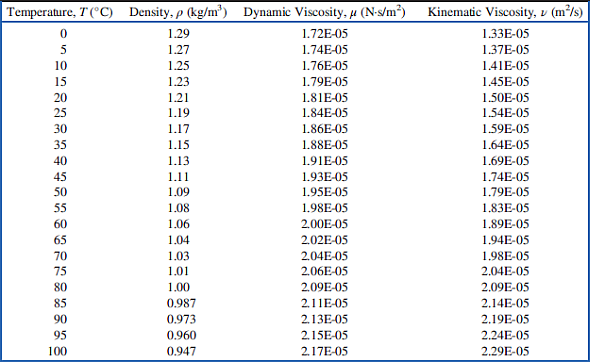

The kinematic viscosity of air at 15 ☌ is 1.48 × 10-5 m2 /s or 14.8 cSt.

What is the kinematic viscosity of air at 15 ☌? For example, the kinematic viscosity and density of water at 78 ☌ is around 0.37344 mm2 per second and 0.973 grams per cm3, respectively. Simply multiply the kinematic viscosity of the liquid at a particular temperature by its density at that same temperature. How do you find the kinematic viscosity of water? What has lower viscosity than water?Īcetone has a viscosity 3x less than water but weighs 2.5 times more. It is measure of fluid’s resistance to shear flow under the weight of gravity. Kinematic viscosity is ratio of dynamic viscosity to density of that fluid. What is the difference between viscosity and kinematic viscosity?ĭynamic viscosity is measure of fluid’s resistance to shear flow when some external force is applied. A basic difference between the dynamic and kinematic viscosity measurements is density. The unit of measure of kinematic viscosity is Centistokes (cSt). The time is converted directly to kinematic viscosity using a calibration constant provided for the specific tube. Water at 20.2oC (68.4oF) has the absolute viscosity of one – 1 – centiPoise….Dynamic (absolute) Viscosity. What is the ratio of dynamic viscosity μ of air water to the kinematic viscosity of air water?Įquation (1) is known as the Newtons Law of Friction. If you divide kinematic viscosity by the fluid density, you get absolute viscosity. Thus, dynamic viscosity is a measure of force, while kinematic viscosity is a measure of velocity. Kinematic viscosity incorporates fluid density as part of its measurement. What is the difference between dynamic viscosity and kinematic viscosity? Honey, syrup, motor oil, and other liquids that do not flow freely, like those shown in Figure 1, have higher viscosities. Water, gasoline, and other liquids that flow freely have a low viscosity. The viscosity of a liquid is a measure of its resistance to flow.

It is the measure of the resistive flow of a fluid under the influence of gravity.ĭoes water have greater viscosity than any other liquid? Notes: Kinematic viscosity is defined mathematically as the ratio of the viscosity of a fluid to its density. Which of the following represent kinematic viscosity? Of all fluids, gases have the lowest viscosities, and thick liquids have the highest. Measured values span several orders of magnitude. Viscosity is measured using a viscometer. What has a higher viscosity than water?įor instance, honey has a much higher viscosity than water. At 15 ☌, the viscosity of air is 1.81 × 10-5 kg/(m The viscosity of air depends mostly on the temperature. Typical values of kinematic viscosity of air and water at atmospheric temperature are 1.46 x 10-5 m2/s and 1.14 x 10-6 m2/s, respectively. What is the ratio of kinematic viscosity of air to that of water? Water, under normal temperatures, is about 50 times more viscous than air. 11 Why is the viscosity of mercury greater than that of water?ĭoes air have higher viscosity than water?.10 Which is more viscous between water and air?.



 0 kommentar(er)
0 kommentar(er)
